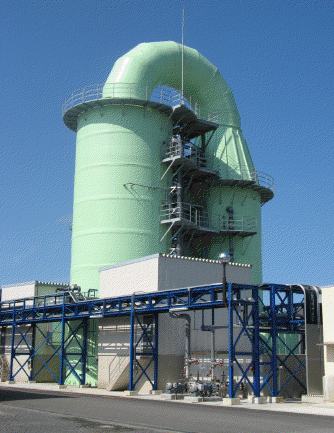![]() Even though, in comparison with many other elements, iodine is produced in small quantities, it nevertheless has many uses. Above all, it is required by humans for the synthesis of thyroid hormones, the thyroxines, essential for growth and development. They are located in the thyroid gland.
Even though, in comparison with many other elements, iodine is produced in small quantities, it nevertheless has many uses. Above all, it is required by humans for the synthesis of thyroid hormones, the thyroxines, essential for growth and development. They are located in the thyroid gland.
Uses of iodine
Iodine readily absorbs x-rays and is used as a contrasting agent in medical x-ray imaging. Iodine is also present in many pharmaceuticals and antimicrobial agents (disinfectants and antiseptics).
.jpg)
Figure 1 The uses of iodine.
Calcium iodate, potassium iodate and potassium iodide are among the iodine-containing compounds added to animal feeds and to salt for human consumption to prevent medical disorders through lack of iodine and iodide ions in the body.
Annual production of iodine
| World | 30 000 tonnes |
The production figures for the United Sates have been witheld but it is estimated to be about 5% of global production (iofina.com).
Of disclosed amounts, Chile (66%) and Japan (32%) are by far the largest producers.
Data from:
U.S. Geological Survey, Mineral Commodity Summaries, 2016.

Figure 2 Iodine is produced as small beads, known as prill.
Prilled iodine is easy to handle and is dust free.
By kind permission of Godo Shigen Sangyo Co., Ltd.
Manufacture of iodine
Iodine is obtained from:
a) brine which contains iodide ions (in particular, brines that are adjacent to oil and natural gas fields)
b) nitrate ores
(a) From brine
Brine containing 100-150 ppm iodine as iodide ions (the amount depending on the source) is purified and acidified with sulfuric acid. It is then chlorinated to liberate the iodine:
.jpg)
Two ways are used to purify the iodine:
i) the blowing out method
ii) the ion-exchange method
(i) The blowing out method
The liberated iodine is removed in an extraction tower by a counter-current stream of air, a process known as anti-blowout. The iodine-rich air passes into an absorbing tower containing hydriodic and sulfuric acids and is treated with a solution of sulfur dioxide, which reduces the iodine to hydriodic acid (Figure 3).
.jpg)
Figure 3 The blowing out method for extracting iodine from brine.
By kind permission of Kanto Natural Gas Development Co., Ltd.
.jpg)
Most of the solution is reacted again with chlorine and the iodine produced allowed to settle, remelted and then flaked.
.jpg)
The remainder of the solution is recycled to the absorption tower. The stripped brine is returned to its source. 99.5% pure iodine is obtained.

Figure 4 A view of the Blowing out and Absorption towers.
By kind permission of Nihon Tennen Gas Co., Ltd.
(ii) The ion-exchange method
The iodine which is liberated reacts with iodide ions to form, principally, I3- ions:
.jpg)
The I3- ions are adsorbed on an anionic exchange resin. The resin is transferred to another column, where a solution of sulfur dioxide drips through to regenerate the iodide ions (Figure 4).
.jpg)
Figure 5 The ion-exchange method for extracting iodine from brine.
Based on information from the Kanto Natural Gas Development Co., Ltd.
The reaction can be represented thus (because the equilibrium above is displaced to the left as the iodine reacts):
.jpg)
As in the blowing out process, this solution is heated again with chlorine and iodine is liberated and purified.
(b) From nitrate ores
In Chile, iodine occurs in nitrate deposits as iodate ions (IO3-). The ore contains approximately 95% sodium nitrate and 5% sodium iodate, NaIO3.
After the removal of sodium nitrate by crystallization, the crushed ore is leached with hot water. The clear solution, in which the iodate ions accumulate, is run off and cooled. A spray of the solution is treated with sulfur dioxide in an absorption tower to release the iodine and convert it to iodide ions:
.jpg)
The overall reaction is thus:
.jpg)
The absorption tower solution is mixed with a small quantity of the solution containing iodate ions to liberate free iodine:
.jpg)
The solid iodine is separated from the solution in flotation cells. The iodine is extracted using a hydrocarbon solvent (kerosine). The iodine/kerosine suspension passes into a reactor and is heated at 400 K and at a pressure above atmospheric. The molten iodine is removed and cooled to give the solid product, known as prill (Figure 2).
.jpg)
Figure 6 A view of a tank (on the right-hand side) in which the
ion-exchange resin is held at this site in Japan.
By kind permission of Nihon Tennen Gas Co., Ltd.
Date last amended: 24th September 2016
